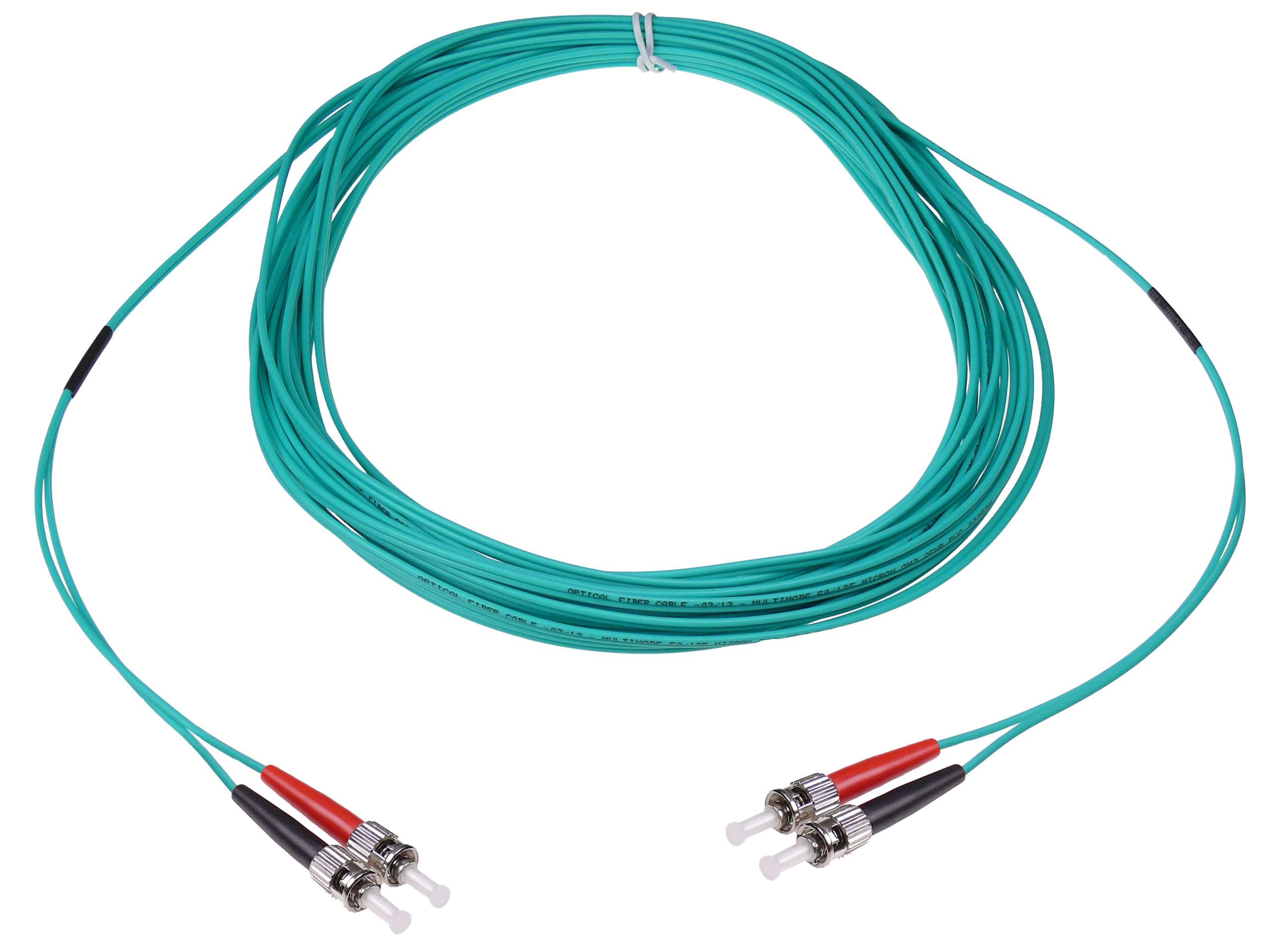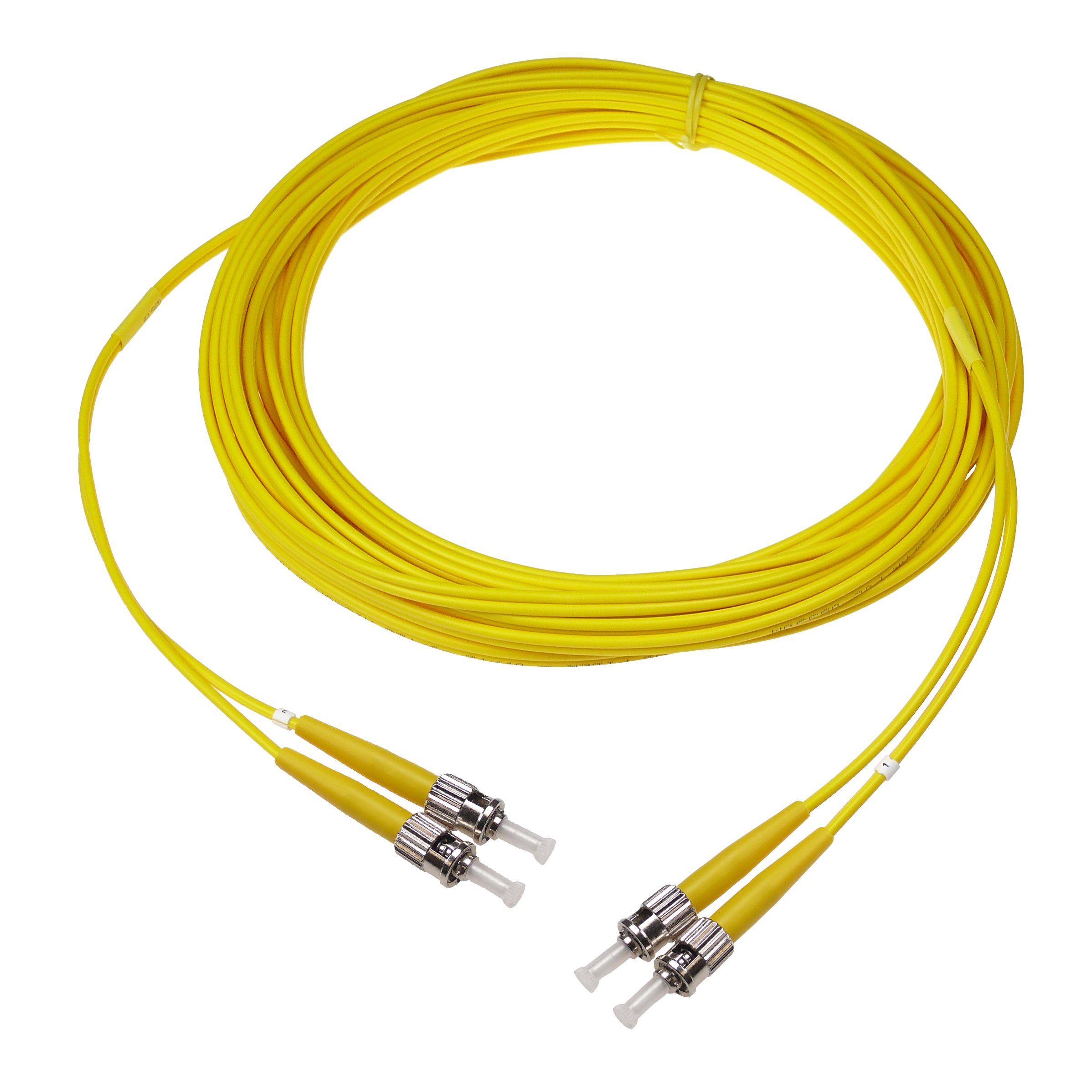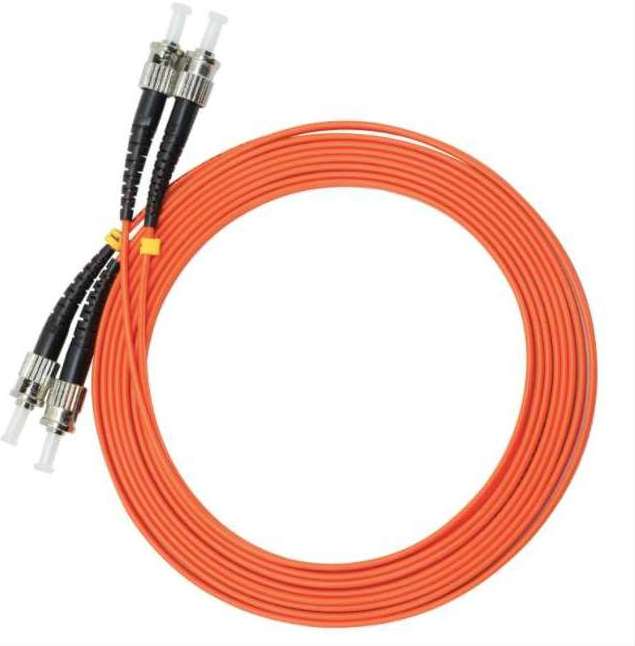The Difference Between Singlemode and Multimode Duplex ST Jumper Cords

Exploring Fiber Optic Patch Cords
Fiber optic patch cords are essential components in fiber optic networks, providing the necessary connectivity between devices. These cords consist of optical fibers enclosed in a protective jacket, allowing for efficient transmission of data through light signals. Understanding the difference between singlemode and multimode fibers is crucial when selecting the right patch cord for your network.
A patch cord, also known as a fiber optic cable or cord, acts as a bridge between two devices, enabling seamless communication. It serves as a reliable medium to transmit data over short or long distances. Whether you're connecting network switches, routers, servers, or other networking equipment, choosing the appropriate jumper cord is vital for optimal network performance.
Differentiating Singlemode and Multimode Fibers
Fiber optic networks utilize two main types of fibers: singlemode fiber (SMF) and multimode fiber (MMF). Understanding the differences between these fibers is crucial for selecting the appropriate jumper cord for your network needs.
Understanding Singlemode Fiber
Singlemode fiber, also known as mono-mode fiber, has a smaller core size compared to multimode fiber. The smaller core allows for a single mode of light to propagate, resulting in longer transmission distances and higher bandwidth capabilities. This makes singlemode fiber ideal for long-haul applications where data needs to be transmitted over significant distances without signal degradation. It is commonly used in telecommunications, high-speed data transmission, and other applications that require reliable long-distance connectivity.
Exploring Multimode Fiber
Multimode fiber, also known as multi-mode fiber, has a larger core size that enables multiple modes of light to propagate simultaneously. This results in shorter transmission distances and lower bandwidth compared to singlemode fiber. However, multimode fiber is more cost-effective and easier to install than singlemode fiber. It is suitable for short-distance applications where high-speed data rates are not required, such as local area networks (LANs), video and audio distribution systems, and fiber-to-the-home (FTTH) installations.

Analyzing the Advantages and Disadvantages
When considering singlemode and multimode fiber jumper cords for your fiber optic network, it's important to understand their respective advantages and disadvantages.
Advantages of Singlemode Fiber Jumper Cords
Singlemode fiber jumper cords offer several benefits that make them suitable for specific applications. They provide longer transmission distances and higher bandwidth capabilities, making them ideal for high-speed data transmission over long distances. Additionally, singlemode fibers have lower signal loss and dispersion, ensuring reliable and efficient data transmission.
Advantages of Multimode Fiber Jumper Cords
Multimode fiber jumper cords come with their own set of advantages. One significant advantage is their lower cost compared to singlemode fiber. This makes them a more budget-friendly option for short-distance applications where high-speed data rates are not required. Multimode fibers also offer easier installation and compatibility with common networking equipment, making them convenient for various setups.
Disadvantages of Singlemode Fiber Jumper Cords
While singlemode fiber jumper cords have many advantages, they also come with some drawbacks. One notable disadvantage is the higher cost compared to multimode fiber. Singlemode fibers require precise alignment during installation, which may necessitate specialized equipment or expertise. Additionally, due to their design optimized for long-distance transmission, singlemode fibers are not suitable for short-distance applications.
Disadvantages of Multimode Fiber Jumper Cords
Similarly, there are certain limitations associated with using multimode fiber jumper cords. These cords have a limited transmission distance and lower bandwidth capabilities compared to singlemode fibers. They also experience higher signal loss and dispersion over longer distances, which can impact the quality of data transmission. As a result, multimode fibers are not ideal for high-speed data transmission over long distances.
Key Considerations for Jumper Cord Selection
Selecting the right jumper cord for your fiber optic network involves considering several key factors to ensure optimal performance and compatibility.
Transmission Distance and Bandwidth Requirements
When choosing a jumper cord, it's crucial to determine the required transmission distance and bandwidth for your specific application. Consider factors such as link length, reach, and the data rates you need to support. Additionally, think about future scalability and potential upgrades to ensure that the selected jumper cord can meet your evolving needs.
Network Equipment and Compatibility
Ensure that the jumper cord you choose is compatible with your existing network equipment. Consider the connector type required by your devices, such as ST connectors, and any polarity requirements. Compatibility is essential to establish a reliable connection between devices and avoid any issues or disruptions in data transmission.
Budget and Cost Considerations
Evaluate the cost-effectiveness of both singlemode and multimode fiber options when selecting a jumper cord. While singlemode fiber may offer advantages in terms of longer distances and higher bandwidth capabilities, it generally comes at a higher cost compared to multimode fiber. Consider not only the upfront costs but also long-term maintenance and operational costs associated with each option.
By carefully considering these key factors during jumper cord selection, you can ensure that your fiber optic network operates efficiently, meets your specific requirements, and remains within budget.

Exploring Applications for Singlemode and Multimode Cords
Singlemode and multimode fiber cords find applications in various industries and settings, each catering to specific needs.
Singlemode Fiber Cord Applications
Singlemode fiber cords, also known as SMF cords or mono-mode cords, are commonly used in telecommunications and long-distance data transmission. They excel in scenarios where data needs to be transmitted over extensive distances without signal degradation. Singlemode cords are also prevalent in data centers and high-speed networking environments, where reliable and efficient connectivity is crucial. Additionally, they are widely implemented in CCTV and security systems to ensure the seamless transmission of video surveillance footage over long distances.
Multimode Fiber Cord Applications
Multimode fiber cords, also referred to as MMF cords or multi-mode cords, have their own set of applications. They are commonly used in local area networks (LANs) within office buildings or campuses, providing connectivity for computers, printers, and other networked devices. Video and audio distribution systems often utilize multimode cords for transmitting signals between devices such as cameras, displays, and audio equipment. Furthermore, multimode fibers find application in fiber-to-the-home (FTTH) installations, enabling high-speed internet access for residential users.
These applications highlight the versatility of both singlemode and multimode fiber cords across different industries and use cases. Understanding the specific requirements of your application will help you determine which type of cord is best suited for your needs.
Making Informed Decisions for Your Fiber Optic Network
Understanding the differences between singlemode and multimode jumper cords is crucial for ensuring optimal performance in your fiber optic network. By considering your specific application requirements, budget, and compatibility, you can make well-informed decisions when selecting the right jumper cord.
Taking into account factors such as transmission distance, bandwidth requirements, network equipment compatibility, and cost considerations will help you choose the most suitable option for your optical fiber network. By making educated choices based on these considerations, you can ensure efficient and reliable connectivity throughout your fiber network.
See Also
The Importance of Choosing the Correct Fiber Optic Patch Cord Type
The Benefits and Features of OptiTap® Field-Installable Connectors: A Comprehensive Guide
Exploring the Different Types of Fiber Optic Splice Closures in 2024
The Future of Fiber Preconnection Solutions: Exploring MTP-LC Duplex 12cores Trunk Cable Patchcord
Exploring the Applications of LC SC Duplex Fiber Optic Adapters
About US
Follow Us
AnetFiber company's main products are indoor and outdoor optical fiber cables, outdoor waterproof pre-connected fiber-to-the-home products, PLC optical fiber splitters, optical fiber jumpers and pigtails, MTP®/MPO high-density big data product solutions, optical fiber field quick connectors and research and development molding, injection molding and production of optical fiber distribution boxes, optical fiber chassis cabinets, the market has expanded to the world, Europe, America, Asia, the Middle East and Latin America.
Address
Shenzhen City, Baoan District, Yanluo Street, Tangxiayong Community, Yangyong Industrial Road, Tonggangda New Energy Vehicle Park 406
Contacts
+86 199 2655 3586

